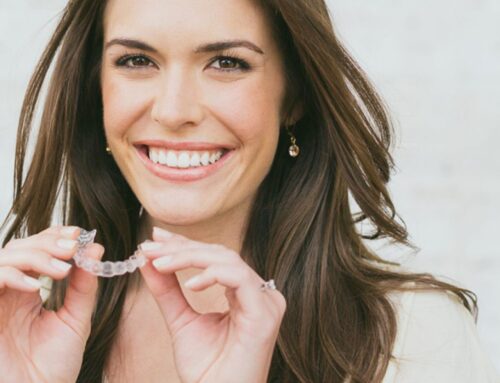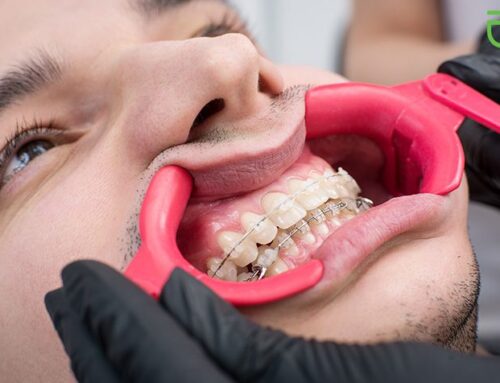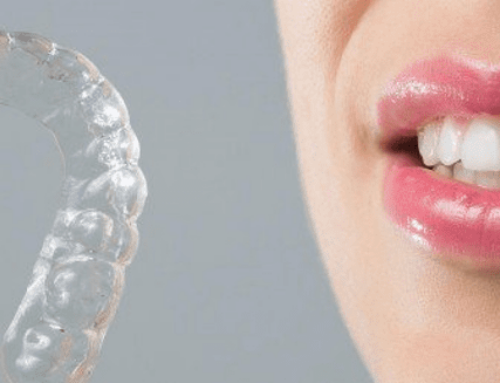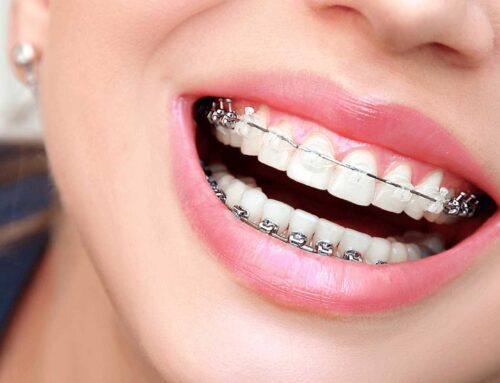Braces for Adults – Benefits & More
Crooked and misaligned teeth can result in self-consciousness and reduced self-esteem, as well as cause several long-term oral health issues. In this article, you’ll learn more about why braces are not just for kids and teens.
A single crooked tooth has the unfortunate habit of drawing a lot of attention to itself. While this may seem like a minor thing to some people, it can easily become one of those constant annoyances that grow in frustration as the months and years go by. Multiple misaligned teeth are even more problematic, as this situation can result in other types of long-term dental health issues, not to mention a significant loss of self-confidence for many people.
Braces and orthodontic treatments are the obvious solution to these types of tooth alignment issues, but they are commonly viewed as something that is just for teens and young adults. Is this really the case? Many mature adults have chosen to undergo orthodontic treatment to address a wide range of dental problems with great success. Let’s explore the different aspects of getting braces as an adult, and explain in more detail what you should know about getting straighter teeth at any age.
What Is The Best Age to Get Braces?
First, it’s important that we are clear about why braces are so common among teens and young people and less so among adults. The best age to get braces isn’t necessarily a set number, but more related to whether or not the patient meets a set of general criteria.
In an ideal case, the patient will have lost all of their baby teeth, and have all their adult teeth in place, with the exception of wisdom teeth which most likely will have already been removed or will be removed in the near future. Because of this, the middle teenage years are the most common time to get braces, since the young age of the patient means that the state of their jaw development allows for greater ease of movement of the teeth depending on the scope of the treatment and the time needed to get the teeth in the correct positions.
In some cases, braces may be recommended at a younger age, if tooth crowding becomes a significant problem or other dental health problems necessitate this type of treatment. In other cases, braces may be recommended at a slightly later age for similar reasons in order to allow for a more natural state of jaw development before orthodontic treatment is the optimum choice. Your dentist or orthodontist will recommend the best timeline for treatment based on a range of factors including your dental health history, x-ray scans, and your personal goals for your dental health.
What Is Different About Getting Braces As An Adult?
The reality is that getting braces as an adult is not much different at all from getting them as a teenager. The process is virtually identical, the braces themselves are no different, and the ultimate objective remains the same; to get perfectly straight teeth!
There are many myths that circulate about getting braces as an adult, but we can certainly clear the air about them. For example, you may have heard that orthodontic treatments take a lot longer for adults than they do for younger patients, but the truth is that modern braces are much more advanced than ever before. Modern orthodontic treatments are more efficient and comfortable, and are able to achieve great results in much less time than the dental appliances used in the past.
Another myth that is quite common is that adults are only able to get metal braces, which is simply untrue. There are many different types of braces that your orthodontist can recommend for you, including some styles that are virtually invisible. As we said before, modern orthodontic technology has come a long way!
How Do Braces Work?
The way braces are able to move teeth in to correct alignment is really very simple. It’s just a matter of applying a small amount of constant force or pressure on the teeth in the direction that they need to move. The braces, brackets, and wires that are affixed to the teeth are shaped and configured in such a way to create this constant force and direct the teeth towards their optimum position. With each adjustment to the braces, which occur on a regular schedule that your orthodontist will determine, the teeth move incrementally closer and closer until the treatment is completed.
While all types of braces work using the same basic principle, the materials used and the style of the braces can be quite different. In fact, there are several types of braces that may be recommended to you. Here’s more details on the most common types of braces used in adult orthodontic treatments.
Know the Different Types of Braces
Traditional Metal Braces
These are the type of braces that you are likely most familiar with. Traditional metal braces consist of small metal brackets that are affixed to each tooth using a strong dental adhesive, with a metal wire running through each bracket to create a contiguous connection across all the teeth along the top or bottom jaw. The wires are held in place using soft elastic rings that are usually either clear, white, or grey coloured. These elastics can also come in multiple other vibrant colours, such as blue, green, purple, or any other colour you can imagine so the patient can choose to add a little personality to their braces.
At regular increments, the wires that connect the brackets together will be replaced with a new one that is precisely shaped to maintain the constant light pressure on the teeth that results in the correct movement of each tooth in the jaw. Once this movement has been achieved and the treatment is complete, the brackets will be removed from the teeth. Often, a removable retainer is provided to the patient that is worn at night to prevent any gradual natural movement and help ensure the teeth remain in the proper placement permanently.
Fast Braces
Visually, there is very little difference between traditional metal braces and fast braces. The big difference with fast braces is the use of specially-shaped brackets in combination with ultrasonic and low-level laser therapies to help speed up treatment times and encourage the teeth to reposition at a faster rate. With fast braces, treatment times can be reduced by as much as 50% in some cases. This makes them an excellent choice for patients in need of rapid results.
Ceramic Braces
Ceramic braces are virtually identical to traditional metal braces in their shape, but the materials used to create the appliance are advanced composites that yield a much subtler and less noticeable appearance on the teeth. Ceramic braces feature brackets that can be made to match the natural shade of the teeth, or can also be transparent. These can be the preferred choice of patients who need the function of traditional metal braces, but want a more aesthetic solution.
Invisible Braces – Invisalign Braces
One of the most popular styles of braces for patients of all ages is the innovative Invisalign system. The appeal of this style of braces is easy to see, even though the braces themselves are virtually invisible. Instead of wires and metal or ceramic brackets affixed to the teeth, the Invisalign system uses a series of clear plastic aligners that can be worn and removed with ease by the patient at any time. This gives the wearer greater comfort and convenience when eating and drinking, as well as when performing their usual dental hygiene routine.
As the treatment with Invisalign progresses, the patient will move from one set of aligners to the next as the teeth are gradually moved into the final optimum positions. Invisalign clear braces provide the fantastic results that you want, with unparalleled comfort and convenience. The Invisalign system is the wave of the future in orthodontic treatments, and patients of all ages are eager to take advantage of the benefits this unique form of braces has to offer.
Benefits of Braces for Adults
Choosing to get braces as an adult can be a great way to improve your overall state of health and well-being. The impacts of straighter, properly aligned teeth are numerous, and can be quite far-reaching over the long run. Let’s take a look at the major benefits of undergoing orthodontic treatment.
Boost of Confidence & Improved Well-Being
Perhaps the most obvious benefit of braces and orthodontics is the visible difference it can make to your smile. By improving the alignment of your teeth for a better looking smile, you’ll undoubtedly feel more confident in your appearance. This can have a profound impact on your overall sense of well-being, as well as your mood and outlook. These psychological effects are extremely important to note, as they are some of the main reasons why so many people look to orthodontic treatment to improve the look of their smiles.
Prevention of Other Dental Health Issues
In addition to the psychological benefits, braces are a powerful preventive measure against many different types of oral health problems that can arise from misaligned teeth, severe over or under bites, gaps, or other types of issues related to improper position of teeth. Chewing troubles, speech challenges, tooth grinding, headaches, and many other common problems can frequently be linked to misalignments or positioning issues that braces and orthodontic treatments can address.
By correcting misalignments in the teeth, braces work to prevent minor problems from developing into major health issues. They have also been shown to reverse the progression of many existing types of dental problems, and aid in the recovery and healing process. If you’re wondering if orthodontics might be a way to help manage an existing dental problem, speak with your dentist or orthodontist and they will confer with you about the situation.
Appointment Request
If you’re interested in any of our procedures, and would like to meet with one of our dentists to discuss options, costs and get additional information, complete this short form and we’ll give you a call to arrange for a no-obligation appointment at our Barrie clinic.










